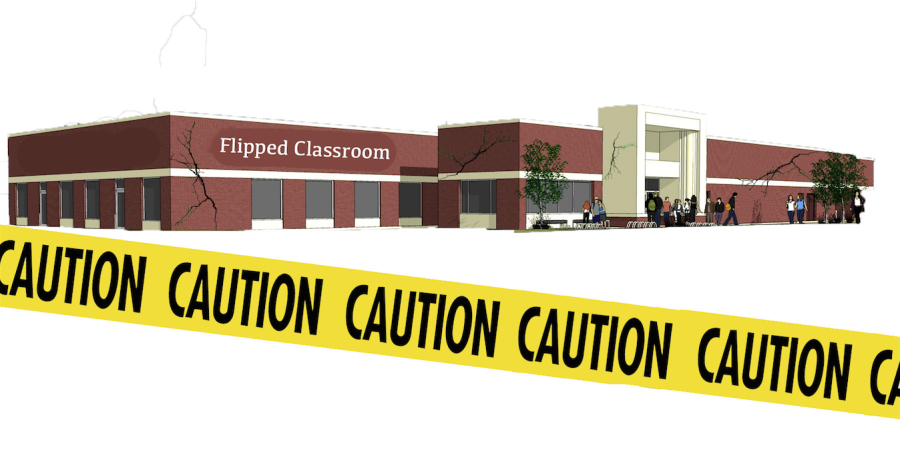Your donation will support the student journalists of Palo Alto High School's newspaper
Joanna de Falla
Important skills are lost when classes switch to the flipped teaching style.
Flipped classrooms lose advantages of traditional classes
October 30, 2015
In an attempt to challenge the traditional style of teaching, in which students listen to lectures, a new type of learning environment has become popular among teachers and parents — the flipped classroom. The flipped classroom attempts to incorporate deeper thinking by allowing students to watch lectures online for homework and using class time for activities such as hands-on projects and group discussions. Like many educational trends, this new type of teaching style is becoming very popular, even though it does not solve all the problems of traditional classrooms.
The flipped classroom model fails to highlight the engaging experiences that many students have when listening to a lecture. Those who criticize the traditional lecture and note-taking teaching style claim that traditional teaching styles are engaging as classroom discussions and activities. While this is sometimes true, a good lecturer can engage students by asking questions to individuals and to the entire class. Lectures can also incorporate classroom discussions, and they often allow students to master important skills when they transfer lectures to notes.
Advocates of flipped classroom say that the traditional lecture is not an effective way to share new information with students. Years of educational experience and research back this statement up. In 2014, Scott Freeman of the University of Washington, Seattle, completed a study that summarized 225 other studies and found that students in classes with pure lectures get lower grades than classes with student participation. However, flipped classrooms still use lectures as the way that student receive new course content. The only difference with flipped classrooms is that the lectures are watched for homework instead of in the classroom.
“Absorbing … long, complex arguments is hard work,” Molly Worthen, who teaches history at the University of North Carolina said in a New York Times article.“[This requires] students to synthesize, organize and react as they listen.”
Many important aspects of lectures are lost when classrooms are flipped. In-person lectures provide students a way to ask clarifying questions. In a flipped classroom, these students may not remember to ask their teacher during the follow-up class discussion.
The flipped classroom can also create problems for many low performing and disadvantaged students. Since class time is used to develop information that was learned through watching lectures the previous night, students who do not complete their homework are at an even greater disadvantage than students who miss homework in traditional classes. Even students that only miss assignments once are just as likely to suffer from this snowball effect in a flipped classroom. This is because these students end up missing the whole lecture and are then unable to participate during activities in class.
In traditional classroom settings, teachers can ensure that students are paying attention to the lectures by engaging and interacting with them. In a flipped classroom, students are trusted to watch lectures online. If they skip the video entirely, they will fail to learn the new information. Students without reliable access to the Internet also miss the new information.
“A kid who does not do their homework normally will not watch the lectures at home even if you hold them accountable,” Chris Aviles, author of the Teched Up teacher blog, said in a post. “This is even more detrimental in a flipped classroom because now the kid can’t participate in that really cool activity you planned.”
The popularity of flipped classrooms does not necessarily make this new teaching style a solution to all educational challenges. Teachers should be careful not to lose many of the important elements of traditional classrooms such as lectures or note-taking. It would be a mistake to rely on this model exclusively because not every students thrives using these teaching practices, and all students will miss out on the opportunity to strengthen important skills.
